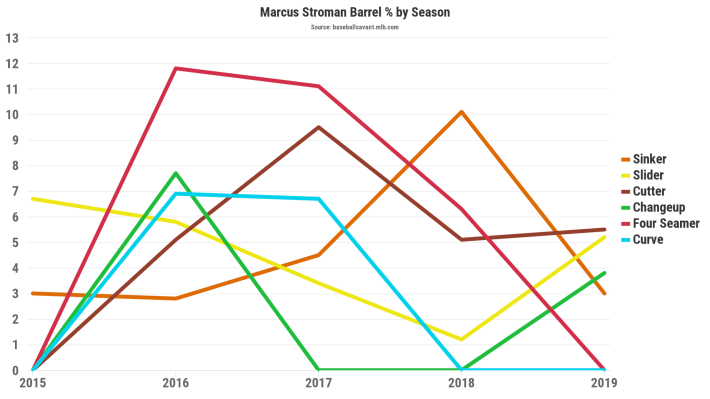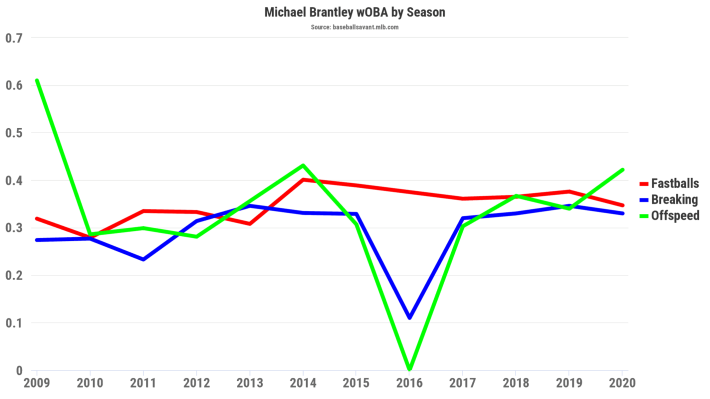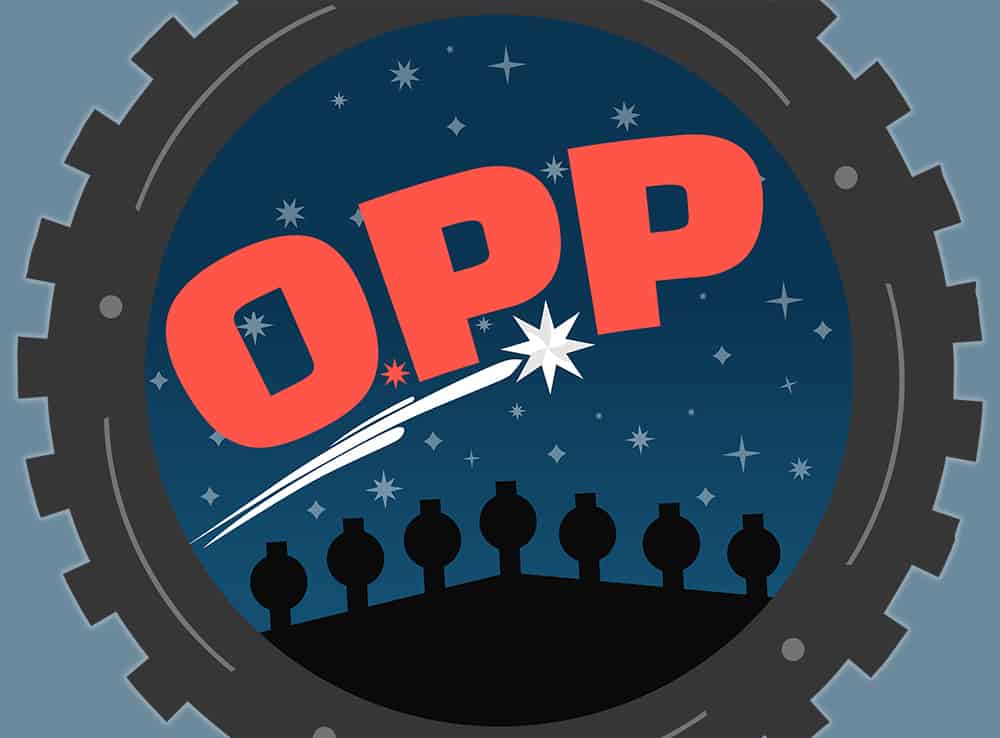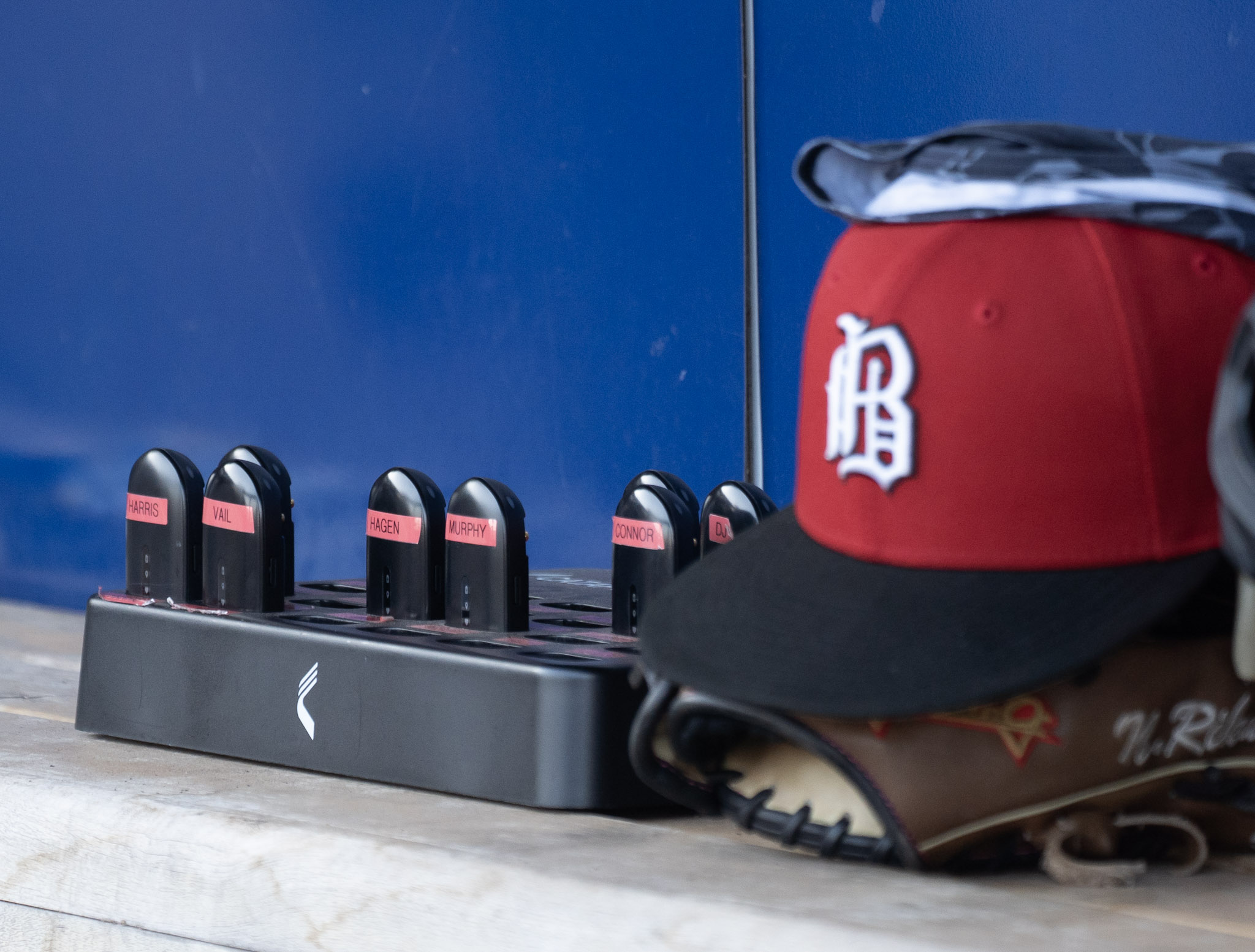PREAMBLE
After snapping their 12-season playoff drought and finishing a game out of winning the American League Central in 2020, the White Sox should be active this offseason. They attempt to accomplish a feat never achieved before in team history: making the postseason in back-to-back seasons.
Now there is a debate about what the White Sox payroll should be as it will determine just how aggressive the front office will operate this winter. Missing the profits generated by fans attending games, the White Sox could be around what they entered 2020 with a $128 million payroll. With a new television deal from Turner, and another one looming with ESPN, the media revenues should help bridge the gap for all ballclubs missing out on gameday revenues.
There isn't a good reason why the White Sox can't carry a $135 million payroll. That amount will still be below the league average in 2021. After the prorated contracts for a 60-game season, the White Sox payroll ranked 20th in baseball, so they have ground to make up to be an average spender.
I think this would be an excellent time for Jerry Reinsdorf to go a little crazy for his standards and boost spending to $150 million. There's an opportunity to cash in on good players in free agency while other teams are cashing out. In my 2021 Offseason Plan, I will highlight the difference if the White Sox decided to zig while most of the league zags, both with a $135 million and $150 million budget.
ARBITRATION-ELIGIBLE PLAYERS
- Nomar Mazara: $5.9M
- $135 Million Budget: Tender
- $150 Million Budget: Non-Tender
- The only reason why Nomar Mazara should be wearing a White Sox uniform in 2021 is his salary is below $6 million. If money is not an issue, then the White Sox should move on and find a better solution in right field.
- Carlos Rodón: $4.5M
- $135 and $150 Million Budget: Non-Tender
- Reynaldo López: $2.2M
- $135 and $150 Million Budget: Tender
- Evan Marshall: $1.9M
- $135 and $150 Million Budget: Tender
- Adam Engel: $1.4M
- $135 and $150 Million Budget: Tender
- Jace Fry: $1M
- $135 and $150 Million Budget: Tender
- Yolmer Sánchez: Uncertain
- $135 and $150 Million Budget: Non-Tender; but willing to offer Minor League contract if Sanchez doesn’t find work elsewhere.
- Lucas Giolito: $5.3M
- NEW DEAL: 7 years, $108 million
- 2021: $4.5 million
- 2022: $9 million
- 2023: $13.5 million
- 2024: $19.5 million
- 2025: $19.5 million
- 2026: $21 million (Club Option)
- 2027: $21 million (Club Option)
- NEW DEAL: 7 years, $108 million
Following in the footsteps of Eloy Jimenez, Luis Robert, and Yoan Moncada inking new deals, it’s time for the White Sox to lock up Lucas Giolito. He’s got an excellent shot of being in the Top 5 of AL Cy Young voting after finishing sixth in 2019. Even in a shortened 2020 campaign, Giolito proved reliable in big games for the White Sox.
As we learned last year, starting pitching is not cheap. Giolito’s career trajectory post-2018 could put him in the earnings group of $20+ million if he entered free agency. To help alleviate future costs while providing security to Giolito, I think a seven-year, $108 million contract works for both sides.
For the White Sox, who love club options, having the 2026 and 2027 options at $21 million could help them hedge against any injury risk or regression from Gioltio. Or if he continues this path of success, the White Sox get to keep Giolito at a slightly below market value price point. They skip out on picking up the club options, and the deal looks like five years, $66 million — a little more than what they signed John Danks for back in 2011.
For those that watch Giolito’s Twitch stream, it’s known how much he enjoys being with the White Sox.
Could Giolito make more if he waits three more years? Sure. Giolito could also blow out his arm before reaching free agency and sink his value (See: Rodon, Carlos). Agreeing to a new deal that assures Giolito to be with the ballclub through this contention window and the possibility of hitting that magic number of $100 million should be enticing for both parties.
CLUB OPTIONS
Write “pick up” or “decline” or "rework" after the option.
- Edwin Encarnación: $12M
- $135 and $150 Million Budget: Decline
- I liked the idea of adding Edwin Encarnacion to the 2020 White Sox lineup. Right up until I realized that he’s not hitting above-average velocity or breaking pitches, I’m sure another team will give Encarnacion a shot in 2021. Still, for this cost, the White Sox can find a more consistent hitter.
- Gio González: $7M ($500K buyout)
- $135 and $150 Million Budget: Buyout
- Leury García: $3.5M ($250K buyout)
- $135 and $150 Million Budget: Buyout
- I think Leury Garcia is a good player, but it’s hard to ignore his injury history. I spent a lot of time pondering if it makes more sense to let Mazara walk and keep Garcia playing in the right field. That seems like a sure-fire plan to have Adam Engel make 100+ starts at the position in 2021.
OTHER IMPENDING FREE AGENTS
Try to retain, or let go?
- Alex Colomé (Made $10,532,500 in 2020)
- Let Go
- James McCann (Made $5.4M in 2020)
- Let Go
- Jarrod Dyson (Made $2M in 2020)
- Let Go
I love the idea of having the best catching tandem in baseball for 2021.
The reality is that whichever team loses out on the JT Realmuto sweepstakes will quickly circle to McCann and offer him a deal that makes him the primary catcher, which McCann deserves after two good seasons with the White Sox. I think McCann can at least get a three-year, $30+ million contract.
Alex Colome is a good closer, which is what every contending team needs. If only that were the only need this White Sox roster had, it would be an easy decision to bring Colome back. However, it’s not, and with the projected budget restrictions, it’s better to spend $12+ million elsewhere than on a closer.
COACHING STAFF
Here's a first: Pick your manager and pitching coach, with any elaboration.
- Manager: Joe Espada
I doubt that the White Sox brass would move in this direction, but instead of AJ Hinch or Alex Cora, I would hire current Houston Astros Bench Coach, Joe Espada.
Espada almost landed the Chicago Cubs job last year. I was impressed with his background after reading his New York Times profile covering his time with the New York Yankees and Astros. He helped the Yankees embrace the shift even though it created friction with then-manager Joe Girardi and the Yankees pitching staff. In Houston, Espada has been the front office conduit to help spread the message while not undermining Hinch or current manager, Dusty Baker. Carlos Correa has given Espada praise for helping him improve defensively.
Astros shortstop Carlos Correa described arriving early to spring training camp every day to work on his defense with Espada. “I think he’s one of the best infield coaches out there,” Correa said. “It’s unbelievable how much I’ve learned from him.”
Steeped in Astros’ and Yankees’ Ways, Joe Espada Is a Hot Commodity - by Joe Lemire, New York Times
It seems that Espada is qualified to be an MLB manager. Sure, Hahn is seeking postseason experience from a championship organization. Still, I think Espada checks those boxes even though he wasn’t the manager. If you don’t want a sour taste in your mouth if the White Sox hire Hinch or Cora, I recommend Espada.
- Pitching coach: Chris Fetter
If you want the next Chicago White Sox pitching coach to embrace the modern approach with expertise in data and spin control, then Chris Fetter is your guy. As the pitching coach at the University of Michigan, Fetter has done a magnificent job with the pitching staff. Helping them further develop their arsenal using all of the technology available today. His work showed through when the Wolverines took Vanderbilt to the brink in the 2019 College World Series.
It won’t be easy to bring Fetter into the fold. He turned down the New York Yankees last year and would only leave Michigan in the right situation. Well, it’s time for Rick Hahn to bust out that Michigan Alumni sweater and convince his fellow Wolverine to be the next White Sox pitching coach. I think Fetter can fix Dylan Cease, and that alone would be worth his salary.
After hiring a new manager and pitching coach, working out the arbitration cases, and letting go of the internal free agents, it’s time to go to work. Adding up the 2021 salaries, including the arbitration cases, my $135 million budget plan is $100.695 million before any additional trades or free-agent signings.
Let’s start with the easy part first.
TRADES
None.
Without a minor league season or the White Sox not sharing data from Schaumburg, and little information coming out of the Arizona Instructs, I have little idea how the prospects have developed in 2020. Speaking to others who cover the prospect development and minor leagues, there are opposing scouts who feel the same way about the White Sox. It's hard to gauge just how much these players have improved.
That makes it tough to move any prospects in deals, which is why I'm not going to in my plan. The silver lining is by just spending money on free agents; the White Sox would be able to keep their internal depth intact. Sure, I could move Reynaldo Lopez or Zack Collins, but their value is so low at this point that it wouldn't net much in return.
I hope that there will be a minor league season in 2021. Maybe with enough time, there would enough player development that catches the opposing team's eyes when deals are made before the July trade deadline.
FREE AGENTS
Now it’s time to make some significant additions to the White Sox 2021 roster. Below are the free agents I would sign using the $135 million budget and an additional free agent I would sign if the budget cap were at $150 million.
- Sign RHP Marcus Stroman: six years, $118 million
- 2021 - 2024: $19.5 million per season
- 2025: $20 million (Club Option)
- 2026: $20 million (Club Option)
I could understand some to be hesitant in signing a starting pitcher who missed all of 2020 but adding Marcus Stroman to the White Sox starting staff would be a great move. While recovering from a calf tear, Stroman decided to opt-out of the 2020 season due to Coronavirus concerns. I don’t see any red flags with that decision.
The headline is $118 million to a starting pitcher. Still, this deal is similar to the one Dallas Keuchel signed for the last offseason. It’s a four year, $78 million deal that could become $118 million over six years. I'd hope those two extra years entices Stroman to pick the Sox over other offers. Those two options just depend on how well Stroman pitches into his mid-30’s.
Like Keuchel, throughout his career, Stroman has done a terrific job of generating grounders with a career 58.6% rate. His sinker/slider/cutter combo also misses the barrel as in 2019, Stroman’s Barrel % was in the 94th percentile (That’s good). Even though he has below-average fastball velocity at 92 mph, Stroman was well above average in the fastball spin rate (83rd percentile) and spun on his slider (76 percentile). One slight is that Stroman is not much of a strikeout pitcher with a career K/9 of just 7.36.

It would be great if Stroman could post significant whiff rates like Trevor Bauer, so fans don’t have to worry about so many batted balls in play. However, Stroman has been instrumental in his career generating weak contact and has demonstrated the ability to take the ball every fifth day to pitch 180 to 200 innings in a typical regular season. The White Sox need another dependable pitcher in the starting rotation, and Stroman can be that.
- Sign DH/LF Michael Brantley: three years, $39 million
- 2021: $13 million
- 2022: $13 million
- 2023: $13 million (Club Option)
This deal is a slight pay cut for Michael Brantley, who signed with Houston for two years and $32 million ($15 million base plus $1 million signing bonus per season) before the 2019 season. Some will be scared of Brantley’s age (He turns 34 next season), but he’s not showing signs of slowing down. In 2020, Brantley hit .300/.364/.476 with a wRC+ of 134 and a 9.1% walk rate. He was even better during the Astros postseason run hitting .346/.424/.558.

Breaking down Brantley’s splits further, he hit .331/.402/.525 against RHP in 2020. Playing in the same division as Shane Bieber, Zach Plesac, Carlos Carrasco, Jose Berrios, Kenta Maeda, and Michael Pineda, the White Sox must hit right-handed starters better in 2021. Adding Brantley helps achieve that goal. Slotting him behind Tim Anderson in the lineup will give Jose Abreu, Yasmani Grandal, and Eloy Jimenez more opportunities to bat with runners on the bases. The White Sox offense was excellent in 2020 despite their primary DH hitting .157/.250/.377. This lineup will be even better with Brantley part of the mix.
- Sign C Erik Kratz: one year, $1 million
Signing a catcher who will turn 41-years old next season will cause White Sox fans to raise an eyebrow since Zack Collins, Seby Zavala, and Yermin Mercedes are around, but I trust Kratz more to handle back up duties to Yasmani Grandal.
Kratz ranked 33rd in Baseball Prospectus Catcher Defensive Adjustment (CDA) in 2020 at 0.5. Yasmani Grandal ranked second in this category at 4.0, and old friend Omar Narvaez led the league at 4.5. So there is a gap in defensive capability, but Kratz wasn’t far behind Jason Castro (0.7 CDA) in almost 1,000 fewer opportunities. If you filter the list down to catchers with fewer than 500 CSAA chances, Kratz was second in MLB behind Tomas Nido. Kratz’s strike rate was 49.6% in 2020.
These numbers say that Kratz won’t embarrass himself behind the plate defensively if he made a spot start for Grandal. Something I couldn’t speak for the current White Sox internal catching options.
A big reason why I would add Kratz to this roster is watching how he helped Deivi Garcia make his debut with the Yankees. The White Sox pitching staff is in transition. A new coach and every possible starter will have to figure out how to work better with Grandal. Having someone like Kratz on the roster who excels at building relationships with pitchers would be helpful and more dependable than hoping/praying/wishing that Collins figures it out behind the plate.
Plus, Kratz has a pretty good knuckleball.
******************
For my $135 Million Budget Plan, I’m spent. Adding Stroman, Brantley, and Kratz while extending Giolito puts me at $134.195 million.
How about if the White Sox payroll was $150 million?
For starters, I don’t think a $150 million payroll would even crack the Top 10 in MLB for 2021. While it would be the highest payroll in White Sox history (hell, $135 million would be highest in White Sox history), it’s still well below the Luxury Tax.
So who else could I add if given an extra $15 million? Suppose you scroll back up to my non-tender/tender designations. In a $150 million plan, I will non-tender Nomar Mazara leaving a gap in right field.
- Sign OF George Springer: five years, $110 million
- 2021 - 2024: $22 million per season
- 2025: $22 million (Club Option)
This offer blows away what Nick Castellanos signed with Cincinnati (4 yrs, $64 million) and bests the one year deal Marcell Ozuna signed with Atlanta ($18 million). It does fall short of Bryce Harper’s AAV, which in hindsight, the White Sox should have pursued him a lot more seriously rather than practice their sales pitch.
Adding George Springer would propel the White Sox odds of winning the American League Central immensely. His career 11.1% walk rate would be a much-welcomed addition to the lineup, and Springer still has plenty of pop left in his bat.
SUMMARY
The biggest issue I have with my $135 million team is Nomar Mazara getting a second chance in right field. Outside of Springer, I’m not thrilled with the free-agent options. I see many Joc Pederson suggestions. If you spent two minutes sorting through his Baseball Savant page, you’d see major red flags offensively. The White Sox would be better off rolling with a Leury Garica/Adam Engel platoon. Pederson’s numbers against offspeed and breaking pitches are awful (.091 BA vs. Offspeed, .214 BA vs. Breaking in 2020). I love Marcell Ozuna, but I’d keep him as a DH, and then you’re left with Josh Reddick and Brett Gardner. No thanks.
One idea I had rolling in my head was taking the $24.9 million dedicated to Stroman and Mazara and make it a Jose Quintana and Jackie Bradley Jr. pairing. It would be fun to have Quintana back in the fold, and JBJ had an excellent bounce-back season in 2020. Even if the bat doesn’t meet those numbers in 2021, you don’t have to worry about the glove, and adding him would help improve the outfield defense. Ultimately, I went with Stroman because of the potential boost in the arm he could give the White Sox pitching staff. Plus, Adam Engel is around to help improve the defense in late-game situations.
Another concern I have is the bullpen. Maybe I’m too optimistic, but I think the White Sox can piece together a solid squad with internal options giving more of the young arms a shot. If the unit struggles mid-season, we’ve seen plenty of teams remake their bullpen on the fly with trades.
Overall, I’m content with my plan. If the White Sox front office can land two of the Top 10 free agents this offseason, I think it would go a long way in their attempt to leap Minnesota and Cleveland in the standings. No matter how you divvy it up, the $35 to $40 million, Hahn should have options to improve the roster this offseason.
| $135 Million Budget | ||||
| Projected Lineup | Pos. | Bat | Starting Staff | |
| Tim Anderson | SS | R | Lucas Giolito | |
| Michael Brantley | DH | L | Dallas Keuchel | |
| Jose Abreu | 1B | R | Marcus Stroman | |
| Eloy Jimenez | LF | R | Dunning/Cease/Kopech | |
| Yasmani Grandal | C | S | Dunning/Cease/Kopech | |
| Yoan Moncada | 3B | S | ||
| Luis Robert | CF | R | ||
| Nomar Mazara | RF | L | ||
| Nick Madrigal | 2B | R |





